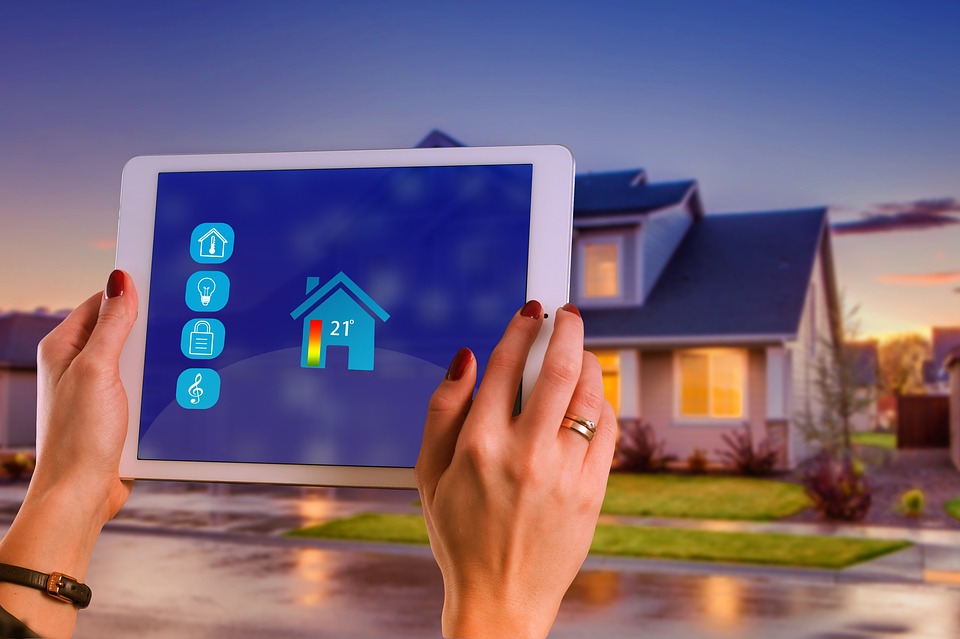Smart homes by default operate on a lot of robust electronics – that’s where the smarts come from. Of course, electronics use more electricity, which goes against the idea of environmental friendliness.
That being said, smart technology is advancing at a very rapid pace, with a particular focus on energy-efficient devices that use less electricity and respectively make smart homes much greener.
And then there are different solutions beyond electronics that can make your smart home greener in different aspects.
Texas Electricity Ratings has put together a nice representative of the variety of green technology and solutions for your smart home.
Smart Electronics and Gadgets
As covered in our post on gadgets that can cut down your energy bills, there are a plethora of smart electronics whose features’ flexibility and all-around superiority make their energy use far more channeled and efficient.
Improvements of a smart home’s energy use efficiency can be achieved through the implementation of a variety of gadgets, from ones that monitor energy usage to smart thermostats that even spot patterns of your household’s habits and adjust accordingly, light bulbs with a wider reach, water-saving tools, and others.
One gadget that may be particularly applicable to smart home and deserves a special mention is a smart power strip.
A very common electricity wastage problem in households, smart or not, is what’s known as vampire power or phantom power, which is the phenomenon of plugged-in devices draining power even when they’re on standby mode. A lot of people don’t know about it and leave devices plugged in at all times. In a smart home with a lot more devices, this vampire power can accumulate to a lot of electricity wastage.
A smart power strip works by cutting out the power to devices that are in standby mode. It may sound insignificant, but a smart power strip can not only lower energy consumption by 5% to 10%, perhaps even more in a smart home, but it’s believed that it can reduce global carbon dioxide emissions by 1%.
Renewable Energy
Renewable energy is the gold standard of environmental consciousness, and there are a few ways to adhere to it in your smart home.
Solar Panels
Solar panels are a classic, arguably the staple of renewable energy. While in installation cost may be high, what you get in return is not only the greenest rooftop possible on the one hand, and a very smart investment on the other, as solar panels will save you money in the long run.
Testa Powerwall Home Battery
Powerwall is gaining more and more popularity for a reason. What this battery does is it taps into the extra energy, gathered by solar panels, and keeps it available for the night or during power outages, practically eliminating or minimizing the reliance on utility.
It’s completely automated, and depending on the size of your home, as well as your average energy use, Tesla can give you an estimate of how many Powerwalls would make your home fully energy sustainable.
Of course, you need to have solar panels installed to make use of the Powerwall.
Green Heating
Geothermal heat pump is certainly not as popular as solar panels as its overall benefit is not as undisputable or universal, nor is it a source of fully renewable energy. That being said, it’s certainly a solution worth looking into.
Geothermal heat pumps use the heat, coming from the ground, to warm houses during the winter, and practically do the opposite during the summer – they use the ground as a heat sink which absorbs the heat.
The initial cost is naturally higher than regular heating modes, however, in the long run, it can turn out to be quite a sensible investment, from both an economic and environmental standpoint.
Something to consider before installing a geothermal heat pump is the source of 1/3 of the heating energy – electricity. Because of that, this solution would perhaps be truly green when combined with solar panels, for example.
Green Watering
There are smart sprinklers which adjust to the climate, soil, current weather conditions, etc. They switch off when it’s raining, and you can control them remotely through an app.
Something else you can do in that regard is installing a rainwater harvesting system. This will save lots of water you’d normally use for watering plants and flushing.
Rooftop Wind Generator
Rooftop wind generators haven’t gained too much popularity as their output so far hasn’t been impressive enough to justify the hassle, financial investment, or the noise they produce.
However, some renewable energy start-ups have been working on fixing these technical shortcomings and harness the potential of this bright green idea, so make sure to keep an eye out for them in the near future.
When you think about it, it’s almost symbolic that when it comes to energy use, green is the color of both environmental and financial gains. With these green technologies and solutions, your smart home will be the center of win-win scenarios.
















